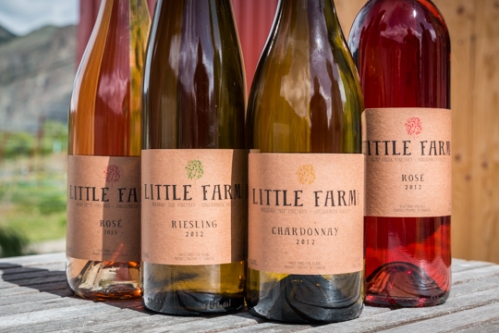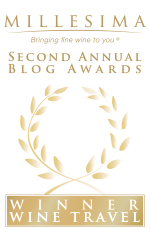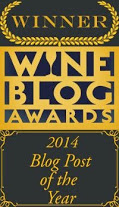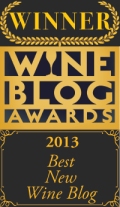Over the last few years, the term “mindfulness” has steadily crept into mainstream American lingo, becoming an accepted secular pursuit rather than a “New Age” hippie philosophy ripped from the pages of Eastern religions (i.e., Buddhism). Articles outlining the benefits of mindfulness and techniques for observing it in daily life are published across a spectrum of media outlets, from the Wall Street Journal to the estimable HuffPo, which felt compelled to declare 2014 the year of the timeless concept of “mindful living.”
Mindfulness, at its core, is a simple idea: It means to be present, in the moment, intentionally and non-judgmentally. Tasting wine can be an exercise in mindfulness.
Wine professionals are trained to engage their senses, noting the details of color, smell, texture, and taste, blocking out distractions to do so, while putting aside evaluation and conclusion for afterwards (even if it is a mere minute or two later).
How often do you actually taste what you are drinking?
Perhaps you recently gulped down a glass with a friend while rehashing last weekend’s drama or fretting about a looming work deadline, without knowing whether the red wine the waiter dropped in front of you was the Côtes du Rhône. Or did you ask for Rioja?
Our brain runs like an endless chyron, constantly distracting; our thoughts filled with agonies and regrets of the past or worries about the future. If last week no longer exists and next year is still fiction, why do we avoid the present so frequently?
The constant barrage of technology and social media doesn’t help us focus either, while supplying us with new ways to manifest guilt.
The growing number of wine apps encouraging users to photograph, record, grade, and transmit each tasting experience, while earning “likes” and “followers,” makes it difficult to just sit and be quiet with the wine. Can the bottle be as dazzling as we claim if we ignore it while submitting to the compulsion to tweet, Instagram, and Facebook the details of our good fortune? And if it was dazzling, and we — gasp — didn’t take a photo and mark our impressions, are we lazy failures doomed to repeat a cycle of self-reproach?
Moving on to tasting techniques: If you want to be a more mindful drinker, but don’t (yet) trust your ability to analyze wine, consider how you might engage with a pet.
When I need to disconnect from the overload of the world, I break to pet my red Dobie. She’s usually curled up (adorably) and dozing on her bed nearby. I sit down on the floor, observe the warm chocolate color of her fur, and run my hand down her soft head, feeling her warmth, her life, and perhaps catching the scent of her breath (which, admittedly, has its bad days, but I’m not judging, remember?). I pet my dog mindfully, and doing so delivers a few minutes of calm and awareness of the moment.
Apply this same technique to wine tasting; “pet” your wine, if you will, noting its qualities without worrying about your lack of training or whether the wine fits some subjective notion of good or bad.
Consider the color: Maybe it sparkles in the glass, and mirrors the deep golden hue of straw bales or the Burmese ruby your grandmother wore on her finger.
How does it smell? Is it dull and lifeless? Perhaps a funky Roquefort cheese or barn odor floats from the glass, or a lively fragrance of flowers and citrus inhabits the wine.
Taste it. Do strawberries, stewed with rhubarb and baked in a pie, spring to mind? What about leather, or smoke from a campfire? Lemons and lime? (Highly unlikely you’d detect all of these flavors at once, unless someone mixed white and red in a glass and cruelly gave it to you blind.)
How is the texture? Are the tannins astringent, like oversteeped tea, or silky and smooth? Does the wine linger in the mouth a few minutes, or vanish like a phantom?
The truth of the wine lies in these details.
While you needn’t judge the wine while tasting — we are being mindful, not awarding scores — you should evaluate the experience afterwards. Did you like it? Why did you buy it: because of the price or brand or grape? If you discover you don’t like it (which you may, when drilling down into the details), then why not try something else next time?
Paying attention to your wine, consuming it consciously, will also reward you with another benefit: awareness of your level of intoxication. It’s easy to get carried away with a second or third round of drinks or crack that second bottle, so savoring each sip keeps you focused on your intake.
Along with the rest of your 2015 resolutions (how are those going, by the way?), consider adding mindfulness when drinking your next glass of wine. You may find you love — or loathe — that Chardonnay more than you’re now unsure if you remember.
(For more information on mindfulness, and meditations that help you achieve it, start by looking into the work of Jon Kabat-Zinn. He launched a Mindfulness-Based Stress Reduction (MBSR) program back in 1979 at the University of Massachusetts Medical School. He’s written lots of books on the topic that are easily downloadable onto Kindle for subway self-improvement sessions.)











I will remember this next time I have a glass of wine. Thank you.
A very thoughful post!
Pingback: Please Pay Attention | THE GRAPE BELT
definitely very meaning full words